Thanks to the important legacy left by the Philips company and now linked to the world of technology and creativity, as New Dutch, in terms of innovation and sustainable tourism, the city of Eindhoven, in North Brabant, the Netherlands, may come as a surprise that it is one of the greenest cities in the Netherlands. Three green wedges enter from the surrounding landscape into the city centre and, considering all the modern buildings and technological marvels, there are many parks in and around the city along the Dommel River, but also the new, unusual green spaces that are being developed.
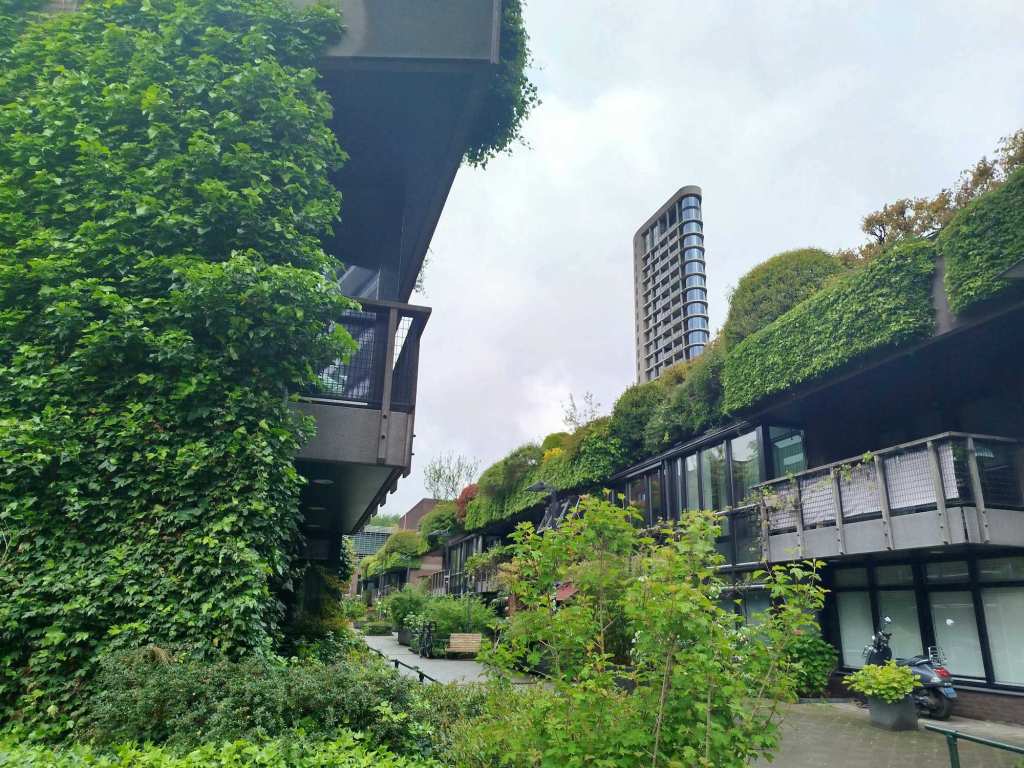
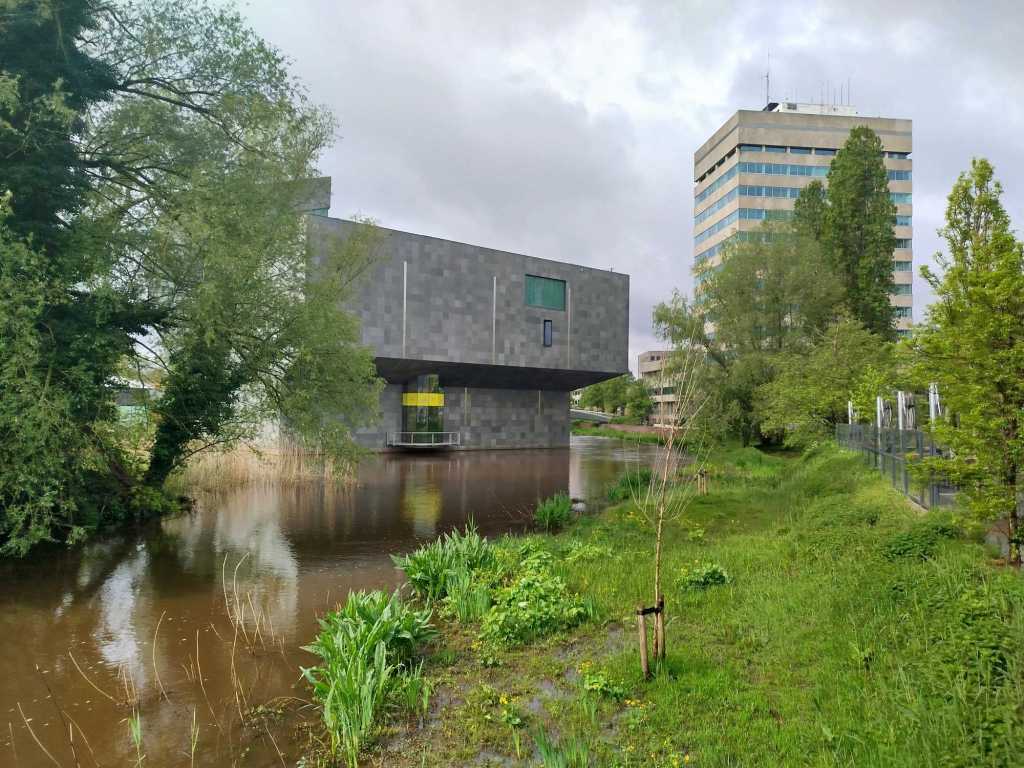
Downtown Eindhoven the Medina (city in Arabic) complex, built in 1999 and supervised by Chief Government Architect Jo Coenen, is a green experience by living in the city with the ‘Hanging Gardens of Eindhoven’. Nowadays designer Coen van Ham in partnership with the Eindhoven City Council developed the Magical Garden on this site: a social design process, together with residents, businesses, and the municipality to increase the greenery and where in the evening the street is magically lit.
Following the Dommel River, which flows through Eindhoven and was immortalized by artist Vincent van Gogh who painted the characteristic windmills that line this winding waterway, Van Abbemuseum is one of the leading contemporary art museums in Europe with a wonderful view of the river. Opened in 1936 as one of the first public museums for modern and contemporary art to be established in Europe, the museum has an extensive international collection of over 3,000 works of art, including artists such as El Lissitzky, Chagall, Picasso, Kandinsky, Beuys and Kokoschka.


To get familiar with Eindhoven, Hotel Parkzicht is a fantastic place, located exactly between the city and nature. The building, constructed in 1930 and commissioned by Philips to house their employees, has been transformed into a beautiful hotel with its restaurant Thym. It overlooks the Stadswandel park, Central Park, an excellent combination of art and monumental trees.
The park, initially a former estate of Den Ezelnt, was designed in the English landscape style by Luis Springer and transformed several times as part of the green lungs suggested by G.Kools in the plan the ‘Great Eindhoven’ in the 1920s. After World War II, the park was integrated by Frans Fontaine, the head of Parks and Gardens, with unusual monumental trees such as Catalpas, Honey locust tree, American sweetgums, Maidenhair trees, Magnolia, Japanese pagoda tree and Tulip tree.
Celebrating the 750th of the town charter in 1982, the park hosted a display of sculptures and 37 artists produced works. The idea arose to make it into a permanent sculpture park to finally achieve a representative overview of Dutch contemporary sculpture.
This was further enriched with the Radio Monument (1936), a reminder of the first radio connection that was established by Philips in 1927 between the Netherlands and the then Dutch East Indies and the Dr. AF Philips Observatory (1937), a public observatory, arose from an initiative of the Eindhoven Weather and Astronomical Society (EWSK) and was made possible by a donation from Anton Philips, chairman of Philips, after whom the observatory is named and designed by the designer Louis Kalff.
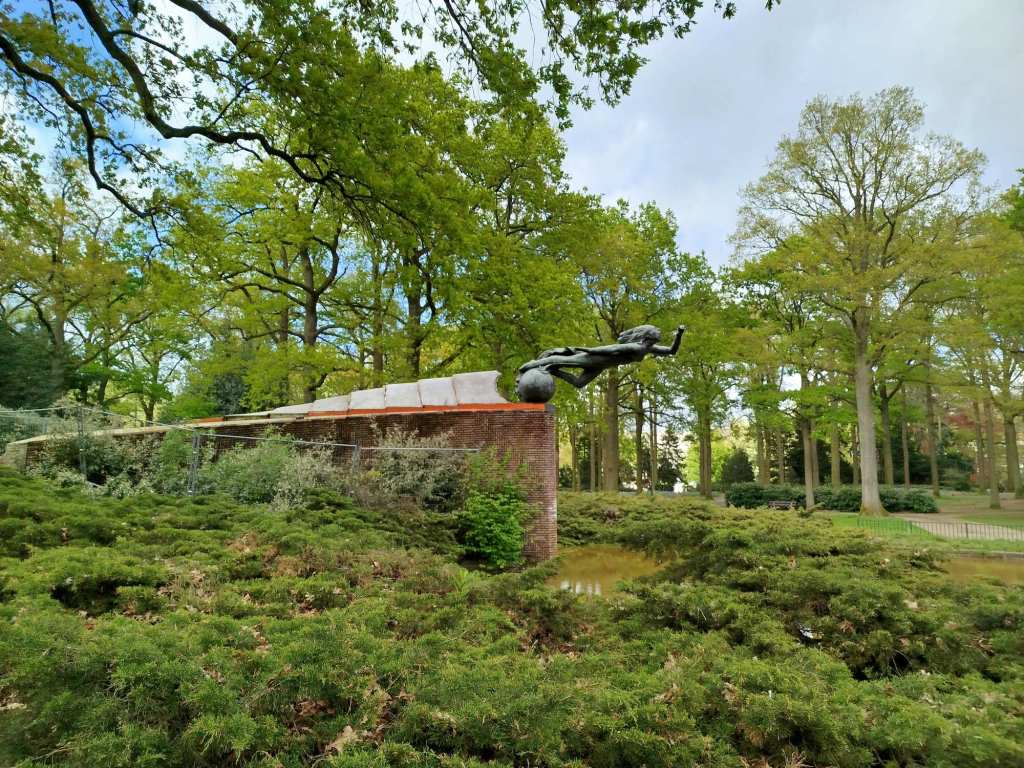
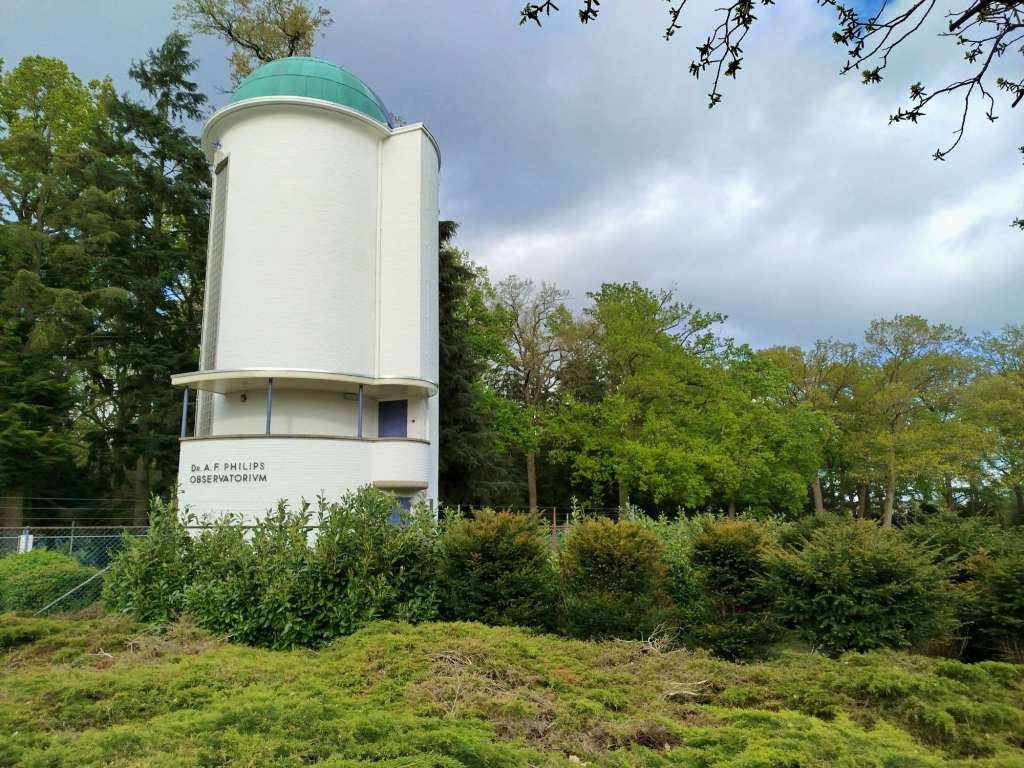
The city itself is inseparable from its design history and nowadays its reputation and strong focus on artistic expression over functionality attract designers from around the world and it is home to one of Europe’s most esteemed and creative design schools: Design Academy Eindhoven and the related event Dutch Design Week.
Design is everywhere even in interior spaces and nowadays the use of the principles of Biophilia, a term first used by Erich Fromm has become part of the interior design of the studio Lime, founded by Lianne Bongers, which creates environments in which many natural elements are present such as plants, water features, organic shapes, fresh air, daylight, natural colours and materials. Recently she founded the Biophilic Design Academy to promote these principles.
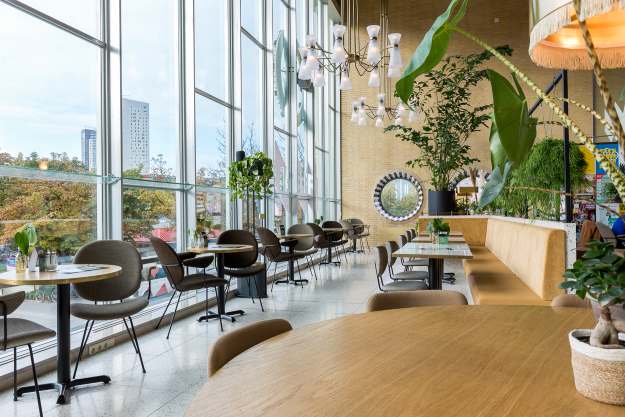
credit Studio Lime

In Eindhoven, there’s not only new innovation in the use of plants in indoor environments but also technological solutions for growing plants for food use. A real example is Phood Farm, the cutting-edge urban farm, setting a new standard for sustainable and community-driven agriculture. Phood Farm focuses on cultivating microgreens, herbs, lettuce, fungi, and seasonal regenerative products.
Utilizing innovative aquaponic systems and permaculture techniques, Phood Farm offers an array of services including farm tours, workshops, and a subscription-based farm box that provides fresh, pesticide-free produce directly to consumers. A central part of the concept is the Phood Kitchen, which uses the farm’s produce to create delicious, healthy meals, demonstrating the farm-to-table philosophy in action.


The green thread linked to innovation moves from the city centre and along the green corridor, the green cycling connection to the Van Gogh National Park, passing through Philips de Jongh Wandelpark and De Wielewaal estate, the future park from the country estate once owned by Frits Philips, and arrives to the BioArt Laboratories, founded by Jalila Essaïdi, Dutch artist, inventor and entrepreneur, a creative incubator that brings together biotechnicians and designers to drive systemic change and find solutions to problems between humans and nature.
Essaidi created “bulletproof skin” by incorporating elements of spider silk into human skin. The result is a material that stops a slow-speed bullet and it can be involved in the medical field. Another interesting project is Mestic®, which is about converting cow manure into cellulose derivatives. The process transforms pulp into a thread and turns it into textiles. The last project is a Geodesic Dome, where which is used for growing the Azolla plants, which involves a water fern, that can bind a lot of nitrogen and CO2 to itself, making it a natural product to reduce CO2.

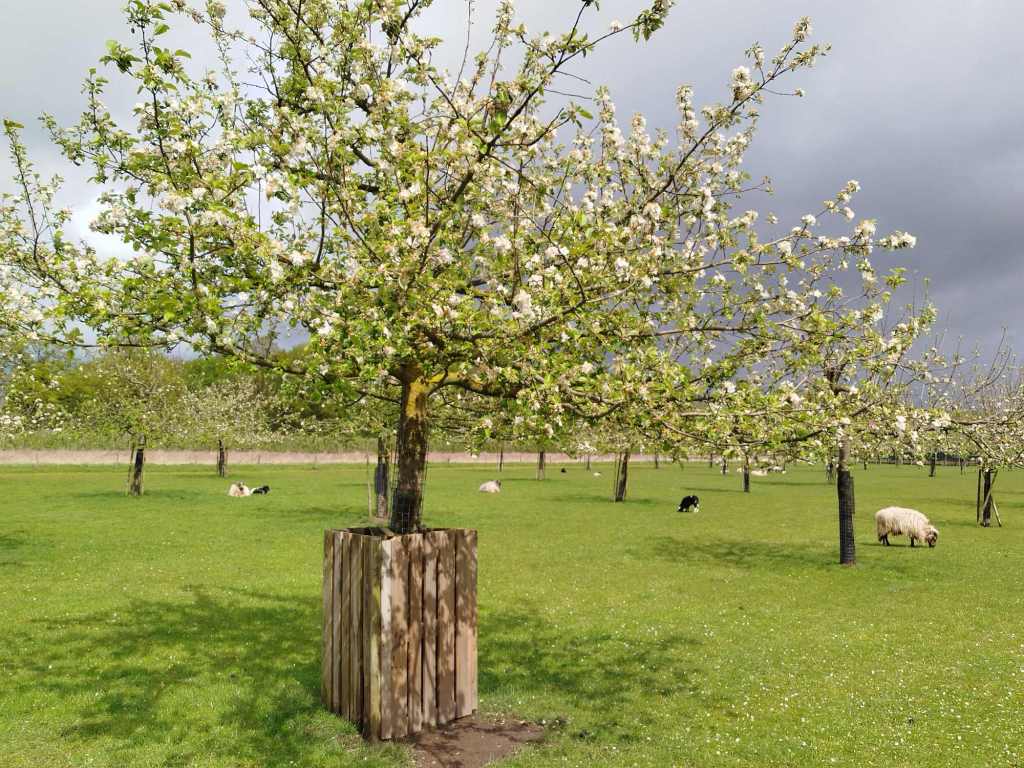
In front of these laboratories, there is also the interesting site Philips Fruittuin (Philips Fruit Garden) which was founded by Anton Philips as a job creation project. It is an orchard of 12 hectares that produces apple, pear and plum trees and the fruits grow with respect for nature, using biological methods. In the orchard are organized several activities such as guided tours, pruning workshops, pic-nic and picking days, or tasting the products in the nearby modern pancake house.
The ideal meeting place amongst the greenery at the Fruittuin is the Conference Center (PIT), designed by KAW-e. Particular attention is the design of the building, made by rafters from local larch trees. The construction is a pilot project for The Natural Step, a method in which the Municipality of Eindhoven gives shape to its sustainability goals, non-depleting the soil, avoiding harmful chemical substances and respecting nature.

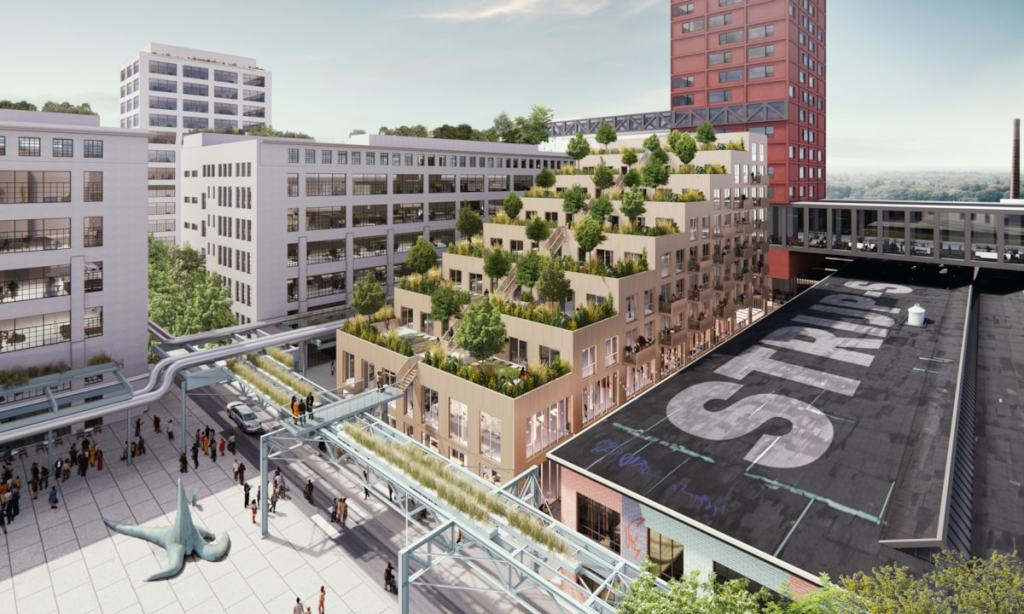
This attitude towards the use of greenery is manifested in new buildings such as the awarded Trudo Vertical Forest, a skyscraper designed by Stefano Boeri architects and located at Strijp-S, the former factory site of the old Philips complex, an example of architecture that is rooted in greenery and in the same area the most typical elements of the complex, the ‘Leidingstraat’, literally ‘Pipe Street’, are transformed into an elevated garden by garden designer Piet Oudolf.
But the future of the city will be even greener, with the Tribune complex, designed by the MVRDV architectural team. The large terraces created by the building’s steps are generously planted with greenery, with several trees, long planters serving as balustrades, and sedum ground coverings, all served by an automatic irrigation system.

credit WEST 8, urban design & landscape architecture
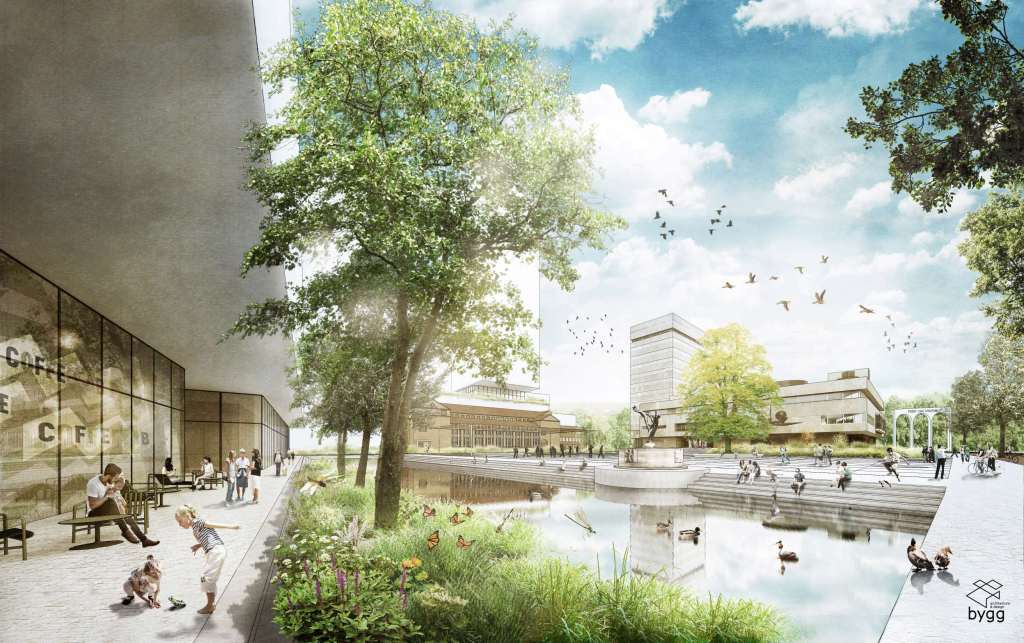
credit Bygg Architecture & Design
The next future green areas in the heart of the city will be Victoria Park, designed by West 8 in Emmasingel where the Eindhoven River Gender will be brought back to the surface, namely to collect water during heavy rains and “Het Paradijs” by Bygg Architecture & Design, named from the townhall district. This visionary transformation integrates various elements such as the Dommel River, a nature corridor, a central pavilion, district gates, and a symbolic tree. Central to the vision is the reintroduction of the Dommel River, weaving in and around the square, creating a nature corridor that connects with the historical essence of Eindhoven.
[…] project demonstreert dat groene gebouwen niet alleen milieuvriendelijk kunnen zijn, maar ook economisch rendabel. Het Imtech Green […]
LikeLike
…green buildings can not only be environmentally friendly, but also economically viable. The Imtech Green Building sets a new standard for sustainable architecture in the Netherlands…
LikeLike